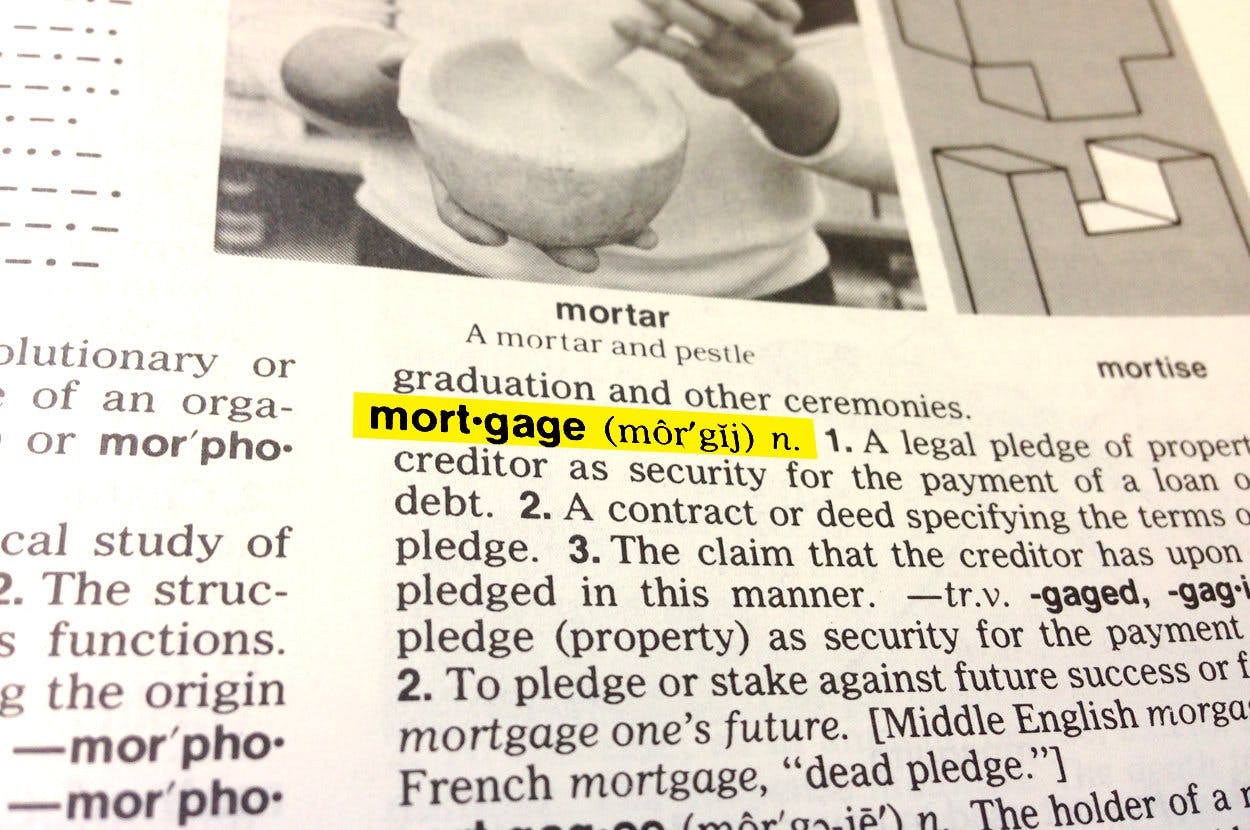Buy and Borrow
Mortgage Dictionary: All the Loan Terminology You Need
February 26, 2018

Ready to buy your first home? Congratulations! It’s an exciting time for sure, but it can also be very confusing.
As you start to research different loans and read up on mortgages, you might feel like you don’t speak the language. You’re not the only one! Many first-time homebuyers find the mortgage and lending terminology to be perplexing at first.
Here’s a simple solution for you. Simply save this article as a reference to help you get through the home loan process without confusion!
Common Mortgage Terms and Definitions
Adjustable rate mortgage (ARM) — an adjustable rate mortgage is a mortgage where the interest rate can change periodically over the life of the loan. An ARM will have a fixed interest rate for a certain number of years, usually at a lower rate. After that period is over, the interest rate can increase or decrease during specific intervals.
Adjustment date — the date when an adjustable rate mortgage’s interest rate will change.
Adjustment interval — the time period in between interest rate changes for an adjustable rate mortgage. This will be a set number depending on what kind of ARM it is.
Amortization — the schedule for paying back a loan. Loan amortization usually includes the amount borrowed for the loan along with accrued interest. Borrowers will see each month how much of their payment goes to the amount borrowed and how much goes to the interest.
Annual percentage rate (APR) — a yearly rate of how much interest and other fees get paid to the lender. It’s the annual price that a borrower pays a lender for borrowing the funds.
Appraisal — an estimate of how much a property is worth. This value is determined by an appraiser who is qualified to analyze and assess the value of a property based on factors like a physical inspection.
Closing — the meeting to finalize a purchase of property.
Closing costs — the costs that a buyer pays to finalize the purchase of a property. These costs may include things like attorney fees, origination fees, applicable taxes and more.
Debt-to-income ratio — one of the factors that lenders consider when making mortgage decisions. The debt-to-income ratio compares a borrower’s monthly payments on debts to the borrower’s monthly income to help estimate whether or not the borrower will be able to repay the loan.
Down payment — the money that a borrower puts down on a home. Lenders often require a specific down payment for borrowers to qualify for a loan.
Equity — the difference between the fair market value of a home and the outstanding balance on the loan.
Escrow — a percentage of the yearly taxes for a loan that the lender pays the borrower at closing.
Fixed rate mortgage — a mortgage that has a set interest rate throughout the entire term of the loan.
Homeowner’s insurance — property insurance on a home. Lenders may require homeowner’s insurance within the terms of a mortgage to help protect the home.
Loan-to-value (LTV) ratio — one of the qualifications that many lenders use to determine whether or not to approve a mortgage loan. This divides the mortgage amount by the home’s value to determine the LTV. Lenders usually require a specific LTV ratio for a borrower to qualify for a mortgage.
Mortgage — a loan to purchase a home.
Origination fee — a combination of costs associated with a mortgage that a borrower needs to pay the lender. These costs might include application fees, appraisal fees and more.
Points — a loan’s percentage points. This refers to the prepaid interest that the lender may require a borrower to pay.
Preapproval — an amount of money that a lender determines a borrower might be eligible for before the borrower applies for a loan.
Private mortgage insurance (PMI) — a type of insurance that is sometimes required in order to secure a mortgage, depending on the lender.
Title — the document that shows legal ownership of a property.
Title insurance — an insurance policy that protects a home buyer from errors with a property’s title. Lenders may require the borrowers to have title insurance.
Truth in Lending — a set of federal regulations that all lenders are required to follow. For example, the annual percentage rate of a loan must be disclosed.
Underwriting — the lender’s decision on whether or not to approve a loan. Underwriting takes into consideration all relevant factors like credit scores, debt-to-income ratios, loan-to-value ratios and more.
Keep this list handy while you review mortgage options with your lender and you’ll be ready to focus on the details instead of trying to figure out what it all means. Good luck!
Category
Buy and Borrow
Tags
Find a Branch or ATM
We’re local, serving multiple counties in Florida


